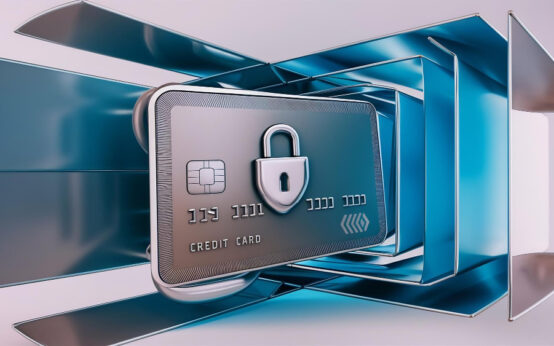Understanding credit card APR is crucial for anyone who uses credit cards regularly. The APR, or Annual Percentage Rate, determines how much interest you will be charged on your outstanding balance. Knowing how it works and how it impacts your finances can help you make informed decisions and potentially save you money.
Firstly, let’s dive into what APR actually is and how it is calculated. By understanding the different types of APR and how they affect your overall cost, you can better manage your credit cards and avoid unnecessary debt.
What is Credit Card APR?
Credit Card APR, or Annual Percentage Rate, is the interest rate charged on unpaid balances. It is expressed as a yearly rate but affects your monthly payments. Understanding APR is crucial as it determines the cost of borrowing when you carry a balance on your credit card.
APR can vary based on several factors including your creditworthiness and economic conditions. It is important to note that not all transactions are subject to the same APR. For example, purchases, cash advances, and balance transfers may each have different rates.
The APR is typically disclosed when you apply for a credit card and can be found in the card’s terms and conditions. It’s critical to review this information carefully to understand the potential costs associated with your credit card.
How APR Impacts Your Finances

APR, short for Annual Percentage Rate, significantly affects your financial health, especially with credit cards. Understanding how APR works can help you make informed financial decisions.
When you carry a balance on your credit card, the APR determines the interest you will pay. For example, a higher APR means you’ll pay more in interest, increasing your debt over time. On the other hand, a lower APR can make managing your debt easier.
It’s essential to be aware of the various types of APR that might apply to your credit card. These include purchase APR, balance transfer APR, and cash advance APR. Each type affects your finances differently, depending on your credit card usage.
Knowing how to calculate your APR can provide a clearer picture of your financial commitments. It involves converting your APR to a daily rate and then multiplying by your card balance. This computation shows how much interest accrues daily, helping you plan your payments.
Lastly, effective management of your credit card APR involves strategies like paying down balances quickly, avoiding cash advances, and transferring balances to cards with lower APRs. Such moves can help you keep interest payments in check.
Different Types of APR
Purchase APR
Purchase APR is the interest rate applied to the outstanding balance on your credit card after making purchases. If you do not pay off your balance in full each month, this APR will determine how much interest you owe on the remaining amount.
Balance Transfer APR
Balance Transfer APR applies to any amount you transfer from another credit card. This rate may differ from your purchase APR and often comes with special promotional rates for a limited time. It’s crucial to understand the terms to avoid unexpected charges.
Cash Advance APR
Cash Advance APR is the interest rate charged when you withdraw cash using your credit card. This APR is usually higher than purchase and balance transfer APRs, and interest starts accruing immediately without any grace period, making it an expensive option.
Penalty APR
Penalty APR is triggered by specific actions, such as late payments or violating the card’s terms. This rate can be significantly higher than other APRs, so it’s essential to make timely payments to avoid it.
How to Calculate APR

Step 1: Understand the Necessary Variables
To calculate your credit card APR, gather the key pieces of information. You will need your credit card’s interest rate, the average daily balance on your card, and the billing cycle duration in days.
Step 2: Find the Daily Periodic Rate (DPR)
The DPR is calculated by dividing your annual interest rate by the number of days in the year (usually 365). For example, if your APR is 18%, your DPR would be 0.18 / 365.
Step 3: Determine Your Average Daily Balance
To find your average daily balance, add up the balance for each day of the billing cycle and then divide by the number of days in the cycle. For instance, if your credit card balance varies daily, keep a log to add and average it out.
Step 4: Calculate the Interest Charges
Multiply your average daily balance by the DPR to find your daily interest charge. Then, multiply this daily interest charge by the number of days in your billing cycle to find the total interest for the month.
If you follow these steps, you can understand how your APR is impacting your finances and make better financial decisions. Knowledge of APR calculation is powerful in maintaining credit health.
Tips for Managing Your Credit Card APR
Understand Your APR: Get to know your credit card’s annual percentage rate (APR) to better manage it. Look for it on your statement or online account.
Pay on Time: Avoid late payments to prevent APR hikes. Set up reminders or automatic payments.
Pay More than the Minimum: Paying only the minimum keeps you in debt longer. Reduce your balance faster by paying more.
Negotiate with Your Card Issuer: Sometimes, you can request a lower APR. Call customer service and ask; it might result in a reduced rate if you have a good payment history.
Transfer Balances Cautiously: Balance transfer offers can provide lower APRs. Be mindful of transfer fees and the duration of the lower rate.
Use Promotional APRs Wisely: Introductory rates can be helpful, but always read the terms. Know when the rate will increase and plan accordingly.
Monitor Your Credit Score: A higher credit score can lead to better APR offers. Regularly check your score and work to improve it.



 Best credit cards secured: your path to a stronger credit history <p style='text-transform:none; line-height:20px !important; font-size:16px; font-weight:normal; color:#424242; margin: 0px; margin-top:10px;'>They offer a smart way to show lenders you’re serious about managing your finances.</p>
Best credit cards secured: your path to a stronger credit history <p style='text-transform:none; line-height:20px !important; font-size:16px; font-weight:normal; color:#424242; margin: 0px; margin-top:10px;'>They offer a smart way to show lenders you’re serious about managing your finances.</p>  The best credit cards for lounge access: your key to premium airport comfort <p style='text-transform:none; line-height:20px !important; font-size:16px; font-weight:normal; color:#424242; margin: 0px; margin-top:10px;'>With these cards, you have exclusive access to lounges, offering comfort while you wait for your flight.</p>
The best credit cards for lounge access: your key to premium airport comfort <p style='text-transform:none; line-height:20px !important; font-size:16px; font-weight:normal; color:#424242; margin: 0px; margin-top:10px;'>With these cards, you have exclusive access to lounges, offering comfort while you wait for your flight.</p>  Safe, simple, and fun: discover the best debit cards for kids <p style='text-transform:none; line-height:20px !important; font-size:16px; font-weight:normal; color:#424242; margin: 0px; margin-top:10px;'>These cards offer the flexibility and convenience that both parents and kids need.</p>
Safe, simple, and fun: discover the best debit cards for kids <p style='text-transform:none; line-height:20px !important; font-size:16px; font-weight:normal; color:#424242; margin: 0px; margin-top:10px;'>These cards offer the flexibility and convenience that both parents and kids need.</p>